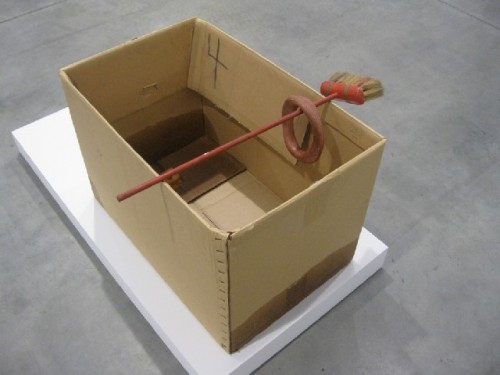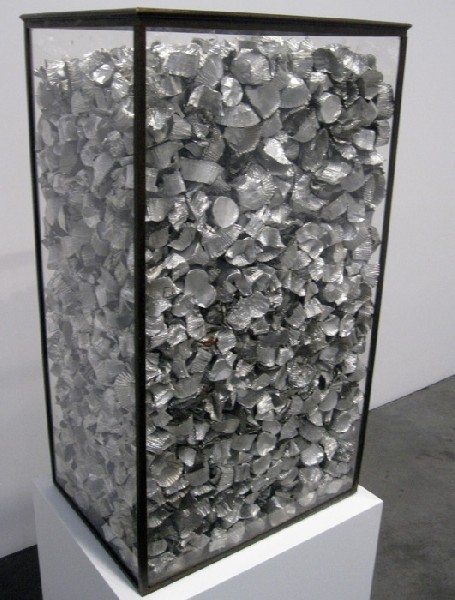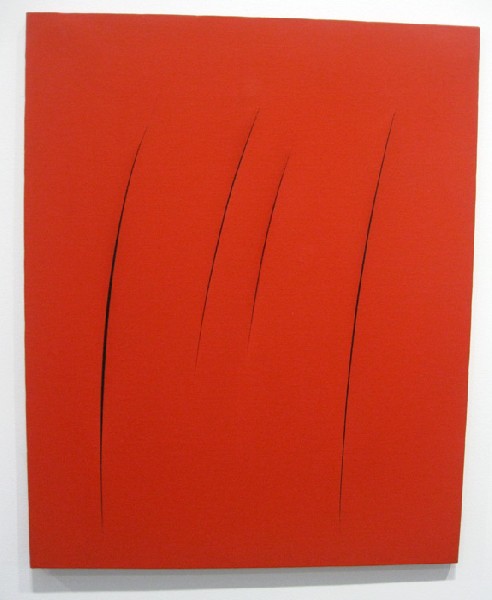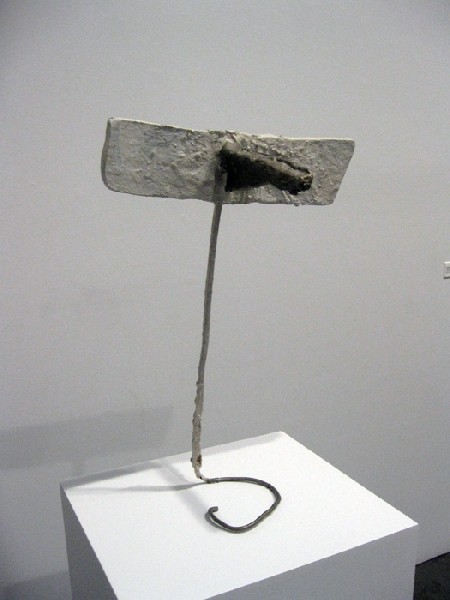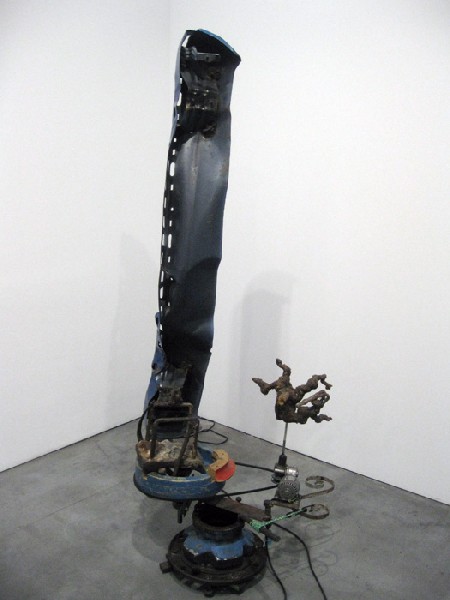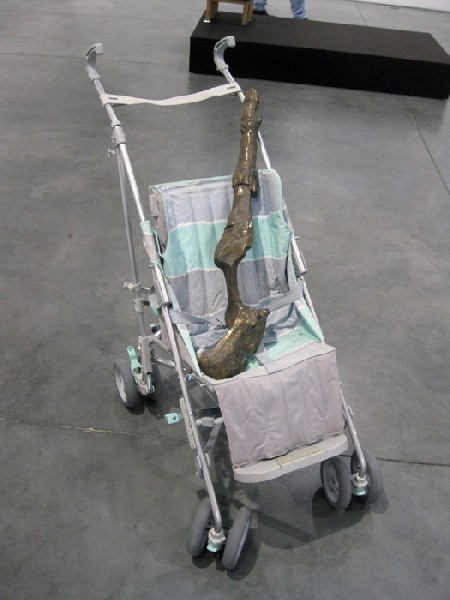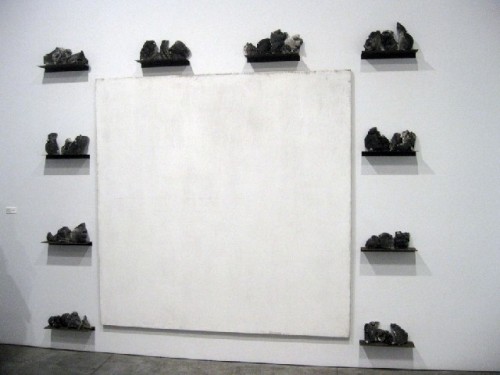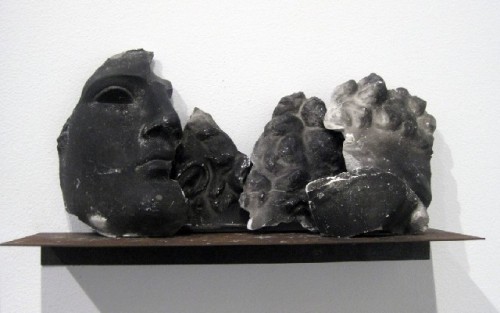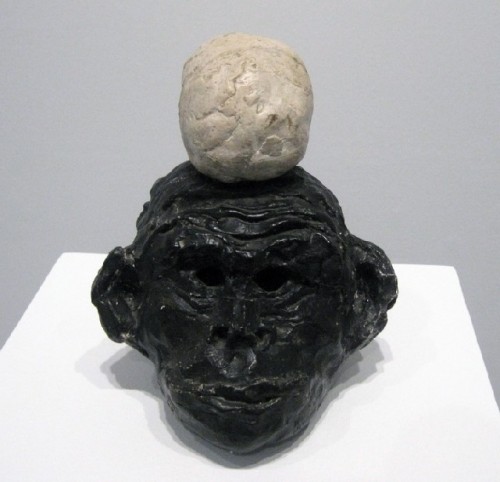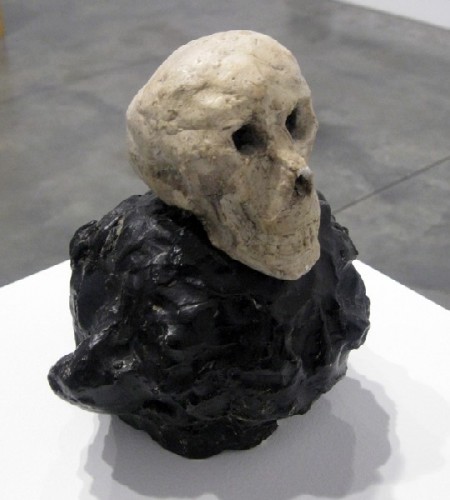The Irreverent Object at Luhring Augustine
European Sculpture from the 1960s to 1980s
By: Charles Giuliano - Dec 14, 2009
There was an ironic smile as we encountered such familiar, outrageous objects as the infamous, Piero Manzoni, can of the Artist's Shit, or an example of the iconic multiple of Joseph Beuys, a small sled equipped with felt, fat, and a flash light.They were just some of the components of an insightful, museum level installation The Irreverent Object: European Sculpture from the '60s, '70s and '80s at Luhring Augustine Gallery, 531 West 24th Street, through December 19.
The delight of this project is that it brought together familiar as well as surprising and less known examples by an A list of contemporary European artists, living and deceased. The artists include: Arman, Joseph Beuys, Louise Bourgeois, Marcel Broodthaers, Lucio Fontana, Georg Herold, Martin Kippenberger, Jannis Jounellis, Piero Manzoni, Mario Merz, Reinhard Mucha, Giulio Paolini, Michelangelo Pistoletto, Gerhard Richter, Dieter Roth, Jean Tinguely, Rosemarie Trockel and Franz West.
The elephant in the room, not included in this list, is, of course the merry prankster and Dada master, Marcel Duchamp. He forever upended our notions of just what is an object of art when he created his series of "Readymades" "Assisted Readymades" and "Found Objects."
With delicious wit he initiated the notion that a work of art is anything that I say is a work of art. It is a matter of elevating the ordinary, commercial, undistinguished, functional object into a signifier for aesthetic contemplation. Thus an upside urinal on a pedestal morphed into "Fountain" signed R. Mutt. A bicycle wheel attached to the top of a stool was transformed as an "Assisted Readymade" into a sculpture. A small vial purchased in an apothecary became "50 C.C.'s of Paris Air."
These works were created by Duchamp with humor as well as a dollop of restraint. He shrewdly limited the production to more or less one a year for a relatively brief period of time. Most of the originals were lost or discarded as the artist, whose fame and reputation would not accelerate until late in his career, traveled and moved about from one small studio to another. He famously retired as an artist to devote his time to chess. In the 1960s he was discovered and shown by Walter Hopps. Then embraced by the emerging Pop and avant-garde masters; John Cage and Merce Cunningham, Robert Raushenberg, and Jasper Johns. Duchamp was amused by the acceptance but mostly snoozed through the tributes to him.
Depending upon whom you talk to some are of the opinion that Duchamp, with his legerdemain and droll trickery, ruined forever the sanctimonious notions of elements of skill and craft, or event talent, in the making of art. In order to create a work of art one just needed to think about it. If anything and everything may be regarded as a work of art then the extrapolation and entropy of that is that art is accordingly diluted and rendered ordinary.
To look at a Duchamp today, multiples were created after the Hopps rediscovery, is anything but mundane. To the initiated, a trip to the Philadelphia Museum to see The Large Glass and other works like Étant donne is rather sublime. Be still dear heart. For others it evokes the familiar telling of the tale of "The Emperor's Clothes."
So an exhibition such as the one on view at Luhring Augustine is an acquired taste. Not everyone will readily marvel at its exquisite irony and excess. Experts will revel in the rarity and wit of such a rich assembly of tantalizing and hilarious objects. It is the kind of show that provokes a range of responses from apathy, confusion, anger, resentment or knowing even elitist, self congratulatory amusement. It is an experience that is all or nothing to visitors.
I just loved every scrumptious and delicious morsel of this show. Well, to be sure, some objects and encounters were more delectable than others. It was a rare invitation to the most nuanced connoisseurship evoking that most elusive sense of duende. It invited us to cakewalk and titubate through the space giggling, shrieking with inner joy, and feeling like an exquisite corpse.
In small samples and brief moments we were reminded of larger and more expansive projects. Like the enormous Dieter Roth exhibition a few years back at the Queens Museum, organized and installed by MoMA, when it was under renovation. That was one of the most staggering experiences of the avant-garde in recent memory. Here we get just a sip of Roth a peg board piece and a chocolate work embalmed under glass. But is evoked rich reflection on his production.
On the other hand, yet again, the works by Arman, typically vitrines filled with stuff, seemed glib and slight. He seems to be the Peter Max equivalent of Dada. Here we found a wall piece with gas masks meaning just what? More provocative was a vertical vitrine alleged to hold the garbage and trash of Raushenberg. It is a page taken from the game plan of A. J. Hoberman in the 1960s. He documented and published the content of trash collected from the street in front of the homes of Dylan and other celebrities. Here Arman reveals that Rauschenberg's refuse included a significant proportion of empty liquor bottles. Let us not speak ill of the dead.
I have an irrational passion for all aspects of the work of that bad boy German artist Martin Kippenberger. The work was wildly uneven but when wide of the mark he was always provocative and absurd. Here there are three typical works. In one a bronze cast of a pig's leg is displayed as an ersatz baby in a stroller. Another is a tin of beer displayed with its plastic ring as a reduced six pack. The third shows us a single boot on a tiny bit of carpet.
One always approaches Beuys with reverence. He was a master every bit as important to the Post War German generation as was Duchamp to his era. There is an impulse to worship rather than simply observe his work. The sled was readily familiar and accordingly evoked knowing nostalgia. But the exhibition also included a piece I encountered for the first time. It took a moment and a check on the label to even identify it as a work by Beuys. Then it unraveled with the familiar element of fat leaching into the cardboard box which included disparate other elements like a small broom resting on top and a small child's toy just in front of the sculpture.
There was an atypical work by Richter, a shirt. Hmm. A vertical bundle of rolls of fabric was created by the Italian Arte Povere artist Pistoletto. Earlier in the season he showed new Mirror pieces at Luhring Augustine. Another AP artist Merz is represented by a stuffed buffalo head high on a wall with a string of neon squibbles spreading out horizontally.
Tinguely is represented by assembled junk sculptures. But this time not kinetic. The polarity of ancient and younger women is represented by a vintage work from Bourgeois and a newer one by Trockel. A large wall piece in elements of shelves surrounding a large blank canvas by Kounellis is typically confounding. While a bit of nothing by West evokes little or no response. Again a slashed canvas monochrome by Fontana delights me but annoys my artist friend Harry. He regards the artist as signifying everything that is wrong with art nowadays.
Don't get me started on that.
.




